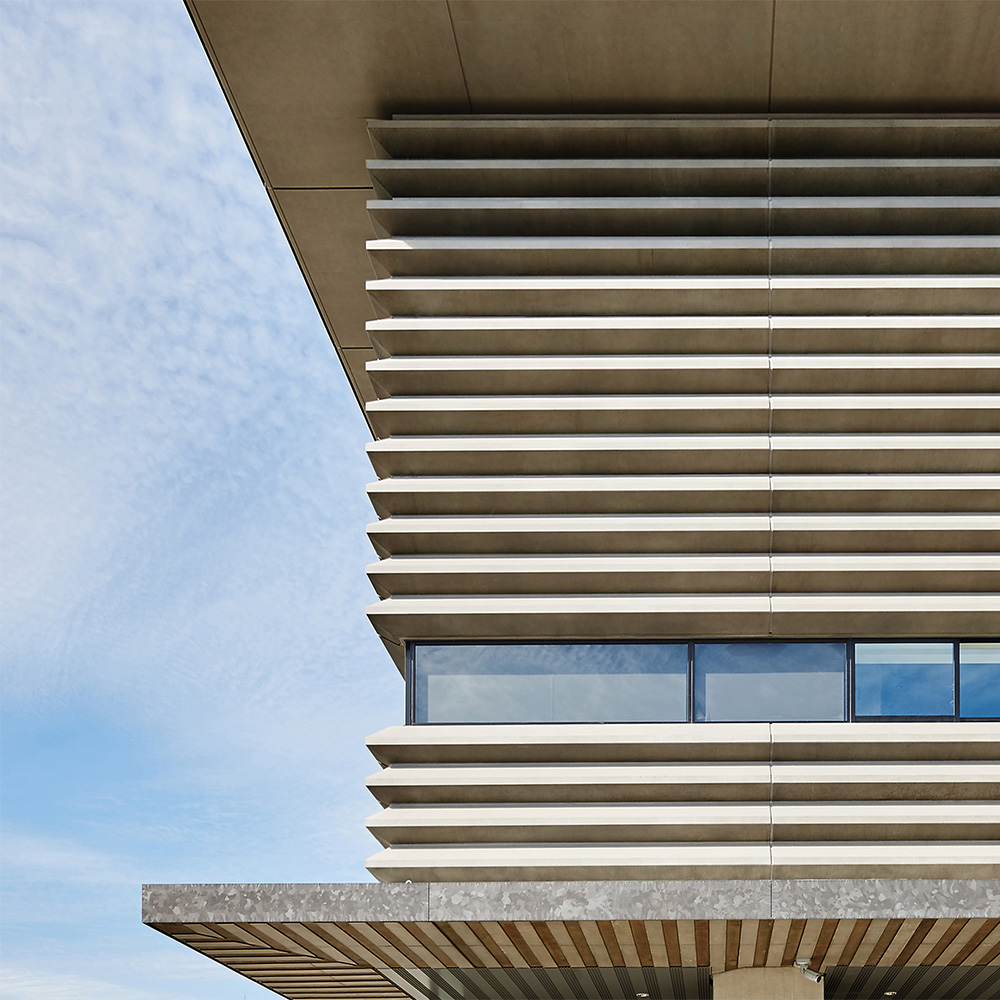
Japan Broadcasting Corporation Nara Station is located in Nara, the ancient capital of Japan with a history of over 1300 years. The important role of this facility is not only to deliver the latest news to the community, but also to pass on the history and culture of Nara, which has been cherished for a long time, to the next generation. Our goal was to create a building that conveys the essence of Nara, while providing an ideal environment for TV broadcasting.


The Japan Broadcasting Corporation Nara Station has been familiar to the community since it opened in 1937. We aimed to create a solid and sturdy building that that harmonizes with the landscape of Nara, which continues to grow together with the community in the future.
The exterior of the building has a strong horizontal shape that recalls "azekura-zukuri" (a traditional Japanese wood construction usually used for warehouses,) and is equipped with functions required for a broadcasting station, including sound insulation. The steel tower was designed to directly express its structure and function as it is, without resorting to spectacular ornamentation. The silhouette of the steel tower against the sunset conveys the essence of Nara, like Goju-no-to (the Five-storied Pagoda.)

The site is located in a block that is expected to become a new hub for interaction in Nara. In order to contribute to revitalization of the city as a broadcasting station, the Heart Plaza, is located facing the plaza space, and can be used in combination with the adjacent plaza for various events by opening up the fittings. The idea was to create a building that would contribute to the revitalization of the community by providing a setting that citizens can casually visit in collaboration with others within the block.

In the event of a disaster, the Japan Broadcasting Corporation Nara Station will serve as a base for emergency disaster broadcasting to protect citizens and the city. The building is based on a seismically isolated foundation, ensuring a high level of safety and maintaining functions as a broadcasting station. The building is also equipped with an off-grid power system which supplies power in case of emergency, in order to maintain broadcasting functions. In addition to incorporating multiple heat sources for air conditioning (electricity, gas, oil) and a water heat storage system, the building is equipped with a well water supply system and an emergency sewage storage tank. The broadcasting station is designed to be resilient to disasters so that it can continue to protect the community at all times.
Broadcasting stations are required to quickly provide accurate information to all areas and protect people's lives and livelihoods, and therefore the buildings need to ensure a high level of safety. Gonkuro Kume, Founder of Kume Sekkei, invented the Kume method of earthquake-resistant wooden construction" based on his experience in the Great Kanto Earthquake, and realized many buildings with a high level of safety by integrating design and technology. Kume Sekkei adhered to this approach for the Japan Broadcasting Corporation Nara Station, pursuing a design that conveys the essence of Nara, while integrating structural and environmental technologies. In the ongoing plans for the Japan Broadcasting Corporation Center in Shibuya, we are working toward the realization of a durable and safe broadcasting station (as of 2021.)

